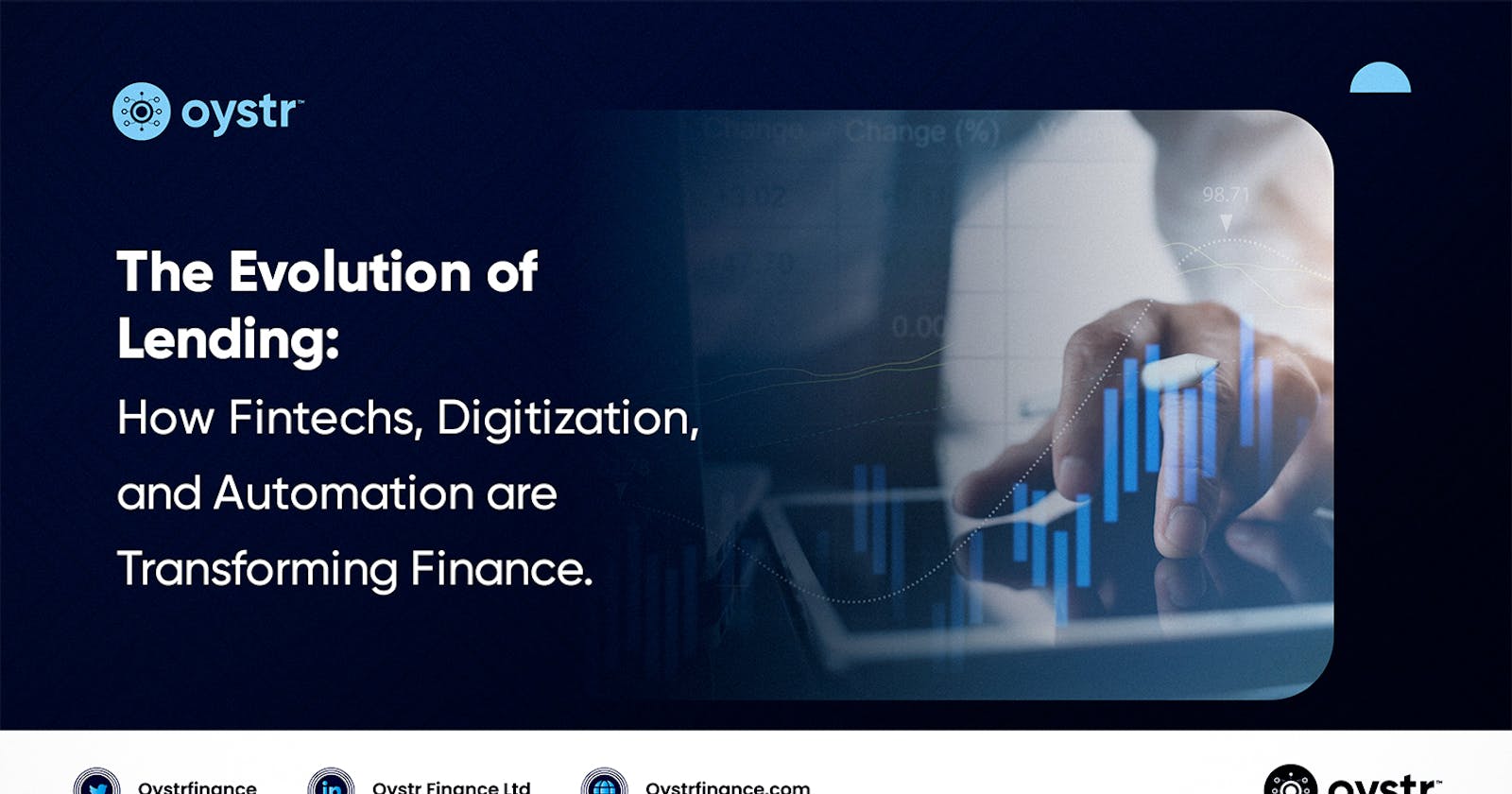The Evolution of Lending: How Fintechs, Digitization and Automation are transforming Finance
If you've ever waited months for mortgage approval, you've encountered the challenges of traditional lending. However, if you've gone online to borrow money for a consumer purchase within minutes, you've glimpsed the future.
Over the past decade, numerous competitors have emerged to disrupt the conventional financial sector. Lending pioneers are reimagining old models by offering digital platforms for loan applications, disbursements, and management.
We are witnessing a remarkable transformation in how loans are secured and a shift in the entities providing lending services. The rise of fintech has been phenomenal, with companies like Palmpay and Opay revolutionizing the banking experience.
However, in addition to these well-known players, unexpected lenders have also entered the scene, offering new borrowing options to consumers and businesses.
Lending is being democratized, with various established and emerging players striving to create customer-centric systems that provide easy access to loans and other credit products. Allow us a few moments of your time to explore what this lending revolution means for the future of finance.
New Players in an Ancient Industry
Financial institutions have offered loans and credit for thousands of years, with evidence dating back to ancient civilizations. In the past, in-person interactions were necessary to secure loans, remiten had to visit a branch or speak with a human to arrange a lending agreement. Today, the lending process has evolved significantly.
Firstly, you can complete the entire lending journey without speaking to a human. Secondly, there has been a noticeable shift in the organizations involved in lending.
For example, businesses trading on Amazon can now borrow money directly from the retail giant, thanks to their partnership with Goldman Sachs, offering merchants lines of credit up to $1 million. Amazon leverages data on its sellers' performance to make informed decisions about risk and prospects.
Companies like Apple and Google have also entered the lending arena. Lending is no longer exclusive to big banks and global financial giants; it's become a sector with many small and large competitors.
Alternative lending is disrupting the financial world. In May 2021, Morgan Stanley recognized this emerging sector as a "secular shift in the way consumers and small businesses access capital." This lending model has evolved from small unsecured consumer loans to small business lending and financing for commercial and residential real estate and other substantial borrowings.

During the global lockdown, alternative finance volumes grew by 24% in 2020, indicating a significant shift in how people access capital. This poses a considerable challenge to traditional financial institutions as they now face competition from various new entrants in markets they once dominated. Can traditional financial institutions learn from their competitors and shape a new future?
The Fintech Impact
However, traditional financial institutions are still in the game. Traditional lenders have advantages in areas such as customer-centricity and guidance. Their users also exhibit different behavior, with traditional lender customers more inclined to use mobile apps, while fintech customers prefer using computers.
Banks and financial institutions have the edge of being a one-stop-shop, offering a wide range of services. Fintechs initially "unbundled the bank," offering individual services, including lending. But now, fintechs are "bundling it all back together again," providing a comprehensive suite of products. Financial institutions can leverage their existing services to build a loyal customer base across various offerings.
Furthermore, financial institutions are partnering with fintechs, especially in the open banking sector. This involves using APIs or endpoints to allow third-party developers to create apps and services for financial institutions. Open banking creates more economic opportunities for everyone, including established financial giants, fintech startups, and small businesses benefiting from more accessible access to these services.
Established financial institutions are also acquiring innovative newcomers, further shaping the industry. In summary, partnering with software-as-a-service companies allows banks to quickly bring new digital products and services to market, benefiting from fintechs' agility without disrupting their established business practices.
Conclusion
Established financial institutions and ambitious startups can thrive in this rapidly evolving world, but only if they prioritize ongoing innovation. In a swiftly changing environment, the choice for lenders is clear: adapt to the digital era or face decline. Don't be left behind.
If your business is considering digitizing its lending processes or entering the market with loans, credit cards, or other financial products, join hands with Oystr Finance and build long-lasting loan products and data-supported methods to boost your business.

